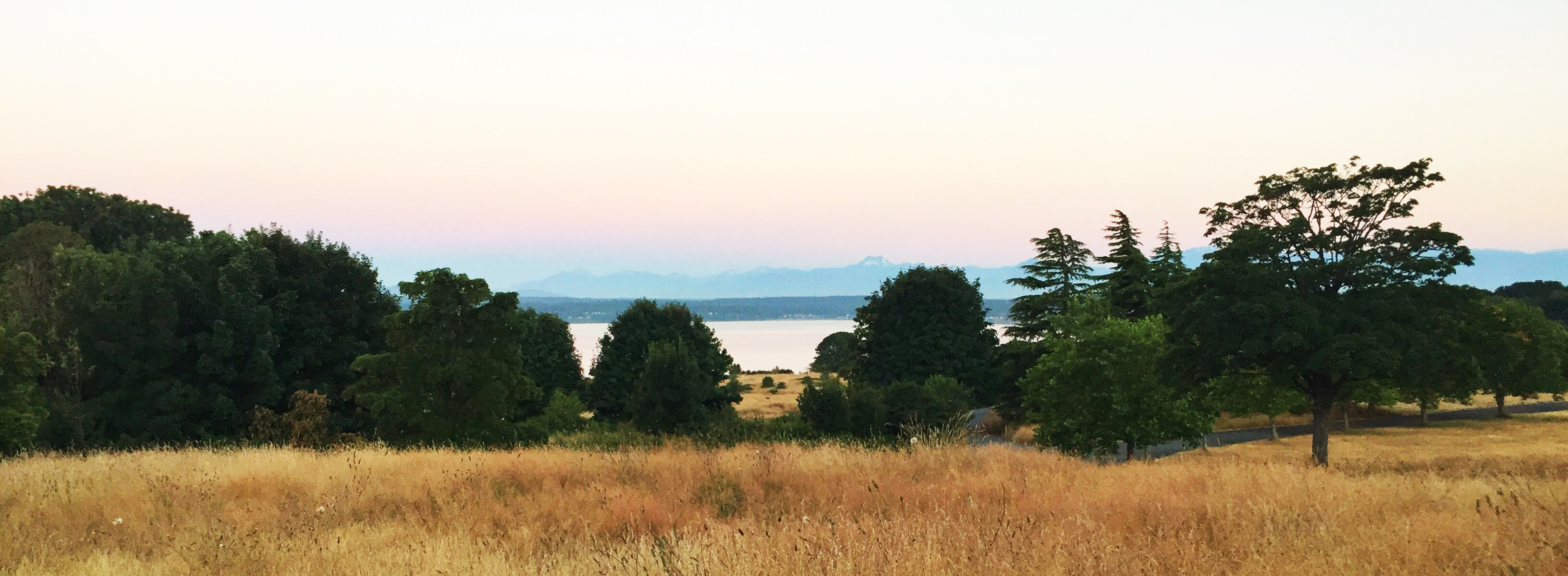- About
- Our Work
- Projects
- Get Involved
- Resources
- The Master Plan
- Maps
- Birds of Discovery Park
- The Wolf Tree Nature Trail
- Historic District Loop Tour
- 500 Area Loop Tour
- Ecosystem Affordances
- Importance of Ecological Services
- Monitoring Discovery Park Bluff Retreat
- Before & After
- 1936 to 2018
- Olmsted’s Legacy
- West Point Weather & Tide
- Park Feedback Form
- Discovery Park Gallery
- Blog
The Master Plan
"To provide an open space of quiet and tranquility... a sanctuary where they might escape the turmoil of the city and enjoy the rejuvenation which quiet and solitude and an intimate contact with nature can bring."Primary Function — Central Purpose
“The primary role of this park in the life of the city is dictated by its incomparable site. That role should be to provide an open space of quiet and tranquility for the citizens of this city—a sanctuary where they might escape the turmoil of the city and enjoy the rejuvenation which quiet and solitude and an intimate contact with nature can bring. It should be accepted that this park cannot satisfy all of the recreational needs of all of the citizens of Seattle. It can only complement the other elements in the park system. This park should not be asked to serve too many functions. It will best serve this city if it is permitted to serve one primary function and to serve that function well.”
Future Structures and Activities
“In the years to come there will be almost irresistible pressure to carve out areas of the park in order to provide sites for various civic structures or space for special activities. There will in the future be structures and activities without number for which, it will be contended, this park can provide an “ideal site” at no cost. The pressures for those sites may constitute the greatest single threat to the park. They must be resisted with resolution. If they are not, the park will be so fragmented that it can no longer serve its central purpose. Only those activities and only those structures should be accepted which are in harmony with the overall theme, character and objective of the park. There must be a deep commitment to the belief that there is no more valuable use of this site than as an open space.”

The original “Fort Lawton Park Plan” was drafted in 1972 by Dan Kiley. As a policy document, it was meant to be used as a guide for making decisions regarding immediate and long range physical development of the Park.
In 1974 Dan Kiley submitted the “Revised Master Plan for Discovery (formerly Fort Lawton) Park”. This was a supplement to the original Fort Lawton Park Plan and incorporated revisions and additions to that earlier document. It was intended that all features and policies of the 1972 report continue to be a part of the Plan, except where revised or expanded by this newest report.
The Purpose of the Revised Master Plan was to “reevaluate certain plan-elements and recommendations of the Long Range Plan in light of policies and developments that have materialized since the Plan was proposed.”
“The Discovery Park Development Plan” was created in 1986 by the Department of Parks and Recreation. It was based upon the 1972 Fort Lawton Park Plan and the 1974 Revised Master Plan for Discovery Park.
As before, it was intended that all features and policies of the 1972 and 1974 Plans continue to be a part of the Plan for Discovery Park, except where revised by this latest effort.
Today, all 3 Plans together comprise “The Master Plan” in that each successive document revises some, but not all, of the features and policies of the previous Plan(s).
Original Master Plan - 1972
The original 1972 “Fort Lawton Park Plan” by Daniel Urban Kiley and Partners.
Read the 1972 plan.
Revised Master Plan - 1974
1974 “Revised Master Plan for Discovery (formerly Fort Lawton) Park”.
Read the revised 1974 plan.
Development Plan - 1986
“The Discovery Park Development Plan” was created in 1986 by the Department of Parks and Recreation.
Read the 1986 Development plan.
The legacy of Dan Kiley is that his work demonstrates how place informs life and how in turn life gives meaning and value to place. That he has done with art, grace, and good humor to the lasting benefit of all. – Peter Ker Walker, 2013

